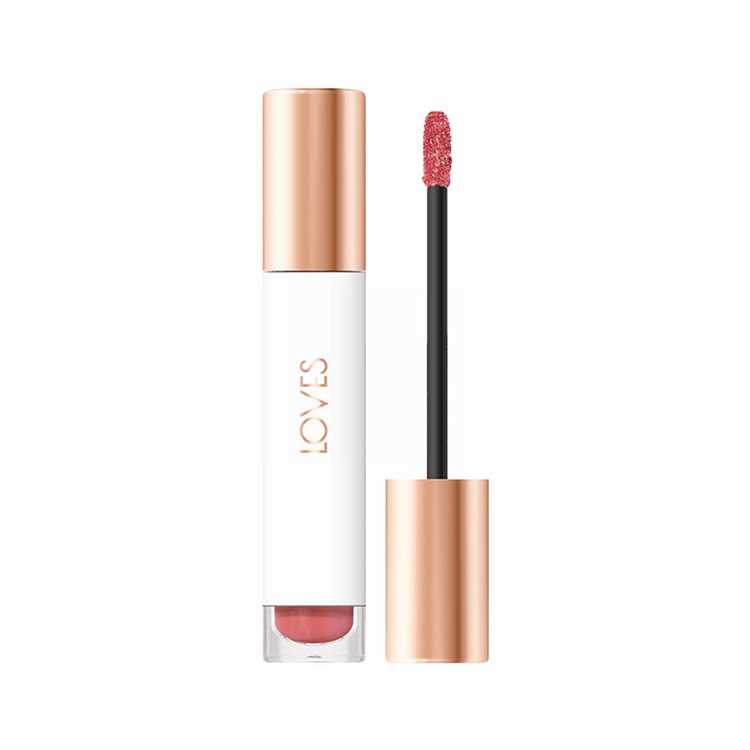When it comes to classifying cosmetics, it’s not always as straightforward as it seems. Take lipstick, for example. Is it a liquid or a solid? This question has sparked much debate among both beauty enthusiasts and scientists alike. To get to the bottom of this, we need to examine the properties and composition of lipsticks.
At first glance, lipstick appears to be a solid product. It comes in a bullet or a tube, and we typically apply it directly from the packaging onto our lips. However, if we delve deeper into its formulation, we find that lipstick is actually a combination of solid and liquid components.
The main ingredient in lipstick is a wax, usually beeswax or carnauba wax, which provides the product with its solid structure. This wax is melted down and mixed with various oils and pigments, which give lipstick its color and texture. These liquid components allow the product to glide smoothly onto the lips and provide a glossy or matte finish.
So, while lipstick may appear solid in its packaging, it can also be considered a semi-liquid due to its unique composition. This classification blurs the line between solid and liquid cosmetics and showcases the complexities of categorizing beauty products. Whether you consider lipstick a liquid or a solid, one thing is for sure – it’s an essential item in many people’s makeup bags.
- What Determines the Classification of Cosmetics?
- Composition
- Consistency
- Intended Use
- Understanding the Role of Ingredients
- Exploring the Difference Between Liquid and Solid Cosmetics
- Liquid Cosmetics
- Solid Cosmetics
- Is Lipstick a Liquid or a Solid?
- Question-answer:
- What is lipstick made of?
- Is lipstick considered a liquid or a solid?
- Can lipstick be classified as a liquid for travel restrictions?
- Can lipstick ever be considered a liquid in terms of its consistency?
What Determines the Classification of Cosmetics?

The classification of cosmetics depends on several factors, including their composition, consistency, and intended use. These factors are used to determine whether a product is considered a liquid, solid, or semi-solid cosmetic.
Composition
One important factor in classifying cosmetics is their composition. Cosmetics can be made up of a variety of ingredients, including oils, waxes, pigments, and emollients. Depending on the specific formulation and concentration of these ingredients, a cosmetic product may be classified differently.
For example, a lipstick typically contains a high concentration of oils and waxes, which give it a solid or semi-solid consistency. On the other hand, a liquid foundation may contain a higher proportion of liquid ingredients, such as water or alcohol, which give it a more liquid-like consistency.
Consistency
The consistency of a cosmetic product also plays a role in its classification. Products that have a solid or semi-solid consistency, such as lipsticks, powders, or creams, are generally classified as solids. These products maintain their shape and form when not in use.
On the other hand, products that have a liquid-like consistency, such as foundations, serums, or mascaras, are classified as liquids. These products flow and pour easily, taking the shape of their container.
It’s important to note that there may be some overlap in consistency between different classifications. For example, a lip gloss may have a more liquid-like consistency compared to a lipstick, but it is still considered a solid or semi-solid cosmetic.
Intended Use
The intended use of a cosmetic product also plays a role in its classification. Some products, such as lipsticks, blushes, or eyeshadows, are primarily used for decorative purposes and are classified as color cosmetics. These products are typically applied to enhance or change the appearance of the skin or features.
Other products, such as moisturizers, sunscreens, or cleansers, are classified as skincare or personal care products. These products are primarily used to cleanse, protect, or improve the condition of the skin.
Overall, the classification of cosmetics is determined by a combination of factors, including composition, consistency, and intended use. Understanding these factors can help consumers make informed choices when selecting and using cosmetic products.
Understanding the Role of Ingredients
When considering the classification of cosmetics, it is important to understand the role of ingredients. The ingredients used in cosmetics, including lipstick, play a crucial role in determining its texture, longevity, and overall performance.
Lipstick typically contains a combination of waxes, oils, pigments, and other ingredients to achieve the desired color and texture. The waxes, such as beeswax or carnauba wax, provide structure and help the lipstick adhere to the lips. They also contribute to the smooth application and help prevent smudging or bleeding.
On the other hand, oils like castor oil or mineral oil are added to provide moisture and nourishment to the lips. They can also enhance the shine and give the lipstick a glossy finish. Additionally, oils help in improving the overall texture and glide of the lipstick.
Pigments, which are responsible for the color of the lipstick, are another essential ingredient. They can be derived from natural sources like fruits or minerals or can be synthetic. Pigments determine the shade, intensity, and undertones of the lipstick and are often combined to create a wide range of colors.
Other ingredients, such as emollients, antioxidants, and preservatives, may also be included in lipstick formulations. Emollients like shea butter or cocoa butter add a softening and moisturizing effect to the lips. Antioxidants, such as vitamin E or green tea extract, help protect the lips from environmental damage. Preservatives, on the other hand, are added to prevent the growth of bacteria and extend the shelf life of the product.
Understanding the role of each ingredient in lipstick formulation is essential for both consumers and manufacturers. Consumers can choose products based on their individual preferences and needs, while manufacturers can develop innovative formulations that cater to specific market demands.
Exploring the Difference Between Liquid and Solid Cosmetics

When it comes to cosmetics, one of the key distinctions is whether the product is in a liquid or solid form. Understanding the difference between these two types can help consumers make informed decisions about their beauty routine and product choices.
Liquid Cosmetics
Liquid cosmetics, as the name suggests, are products that have a liquid consistency. This includes items such as liquid foundation, eyeliner, mascara, and lipstick. These products are typically packaged in containers with applicators or brushes for easy and precise application.
One of the main benefits of liquid cosmetics is their ability to provide a smooth and even application. They are also often formulated to provide long-lasting wear, making them ideal for all-day use. Liquid cosmetics can range in texture from thin and lightweight to thick and creamy, depending on the specific product and desired effect.
However, it is important to note that liquid cosmetics may require additional precautions when traveling, as they can be subject to airline regulations regarding container size. It’s always a good idea to check with the airline or use travel-sized containers to ensure compliance.
Solid Cosmetics
Solid cosmetics, on the other hand, refer to products that are in a solid or semi-solid form. This category includes items such as pressed or loose powder, blush, eyeshadow, and lipstick in a bullet or palette. Solid cosmetics are typically packaged in compact cases or pans.
One of the advantages of solid cosmetics is their portability and ease of use. They are often travel-friendly, as they are less likely to spill or leak compared to their liquid counterparts. Solid cosmetics also tend to have a longer shelf life since they are less prone to drying out or evaporating.
However, it is important to note that solid cosmetics may require specific tools for application, such as brushes or sponges. This can add an extra step or layer to the makeup routine compared to the convenience of a built-in applicator that comes with many liquid cosmetics.
Conclusion: Choosing the Right Cosmetic
Both liquid and solid cosmetics offer their own unique advantages and disadvantages. The choice between the two largely depends on personal preference, desired application method, and specific product goals. Whether one prefers the ease of use and portability of solid cosmetics or the smooth application and long-lasting wear of liquid cosmetics, there is a wide range of options available to cater to individual beauty needs.
Ultimately, the classification of cosmetics into liquid or solid forms provides a helpful framework for understanding the different qualities and considerations associated with each type. Armed with this knowledge, consumers can confidently navigate the world of cosmetics and select the products that best meet their needs and preferences.
Is Lipstick a Liquid or a Solid?
Lipstick is an essential cosmetic product for many people, but have you ever wondered if it is considered a liquid or a solid? The classification of lipstick can be a bit tricky, as it falls somewhere between the two states of matter.
From a scientific perspective, lipstick can be classified as a semi-solid. It has properties of both a liquid and a solid, which makes it unique among cosmetic products.
When you look at a lipstick bullet, it appears solid and compact. However, upon contact with the skin, it starts to melt and glides smoothly over the lips. This is due to the presence of waxes and oils in its formulation.
These waxes and oils give lipstick its semi-solid texture. They provide the stability and structure that resemble a solid, while also allowing the product to be spread easily like a liquid. This unique combination is what makes lipstick so popular and easy to use.
Furthermore, lipstick can have varying degrees of firmness. Some lipsticks are softer and more creamy in texture, while others are harder and more waxy. This is determined by the ratio of waxes and oils in the formulation.
It’s important to note that the classification of lipstick as a semi-solid does not imply that it can change states under normal conditions. Once the lipstick bullet is solidified, it will remain in that state until it is applied to the lips and melts upon contact.
In conclusion, while lipstick is neither a liquid nor a solid in the traditional sense, it can be classified as a semi-solid due to its unique properties. Its ability to combine the best of both worlds makes it a beloved cosmetic product for enhancing the beauty of the lips.
Question-answer:
What is lipstick made of?
Lipstick is typically made of various waxes, oils, pigments, and emollients such as lanolin or mineral oil. These ingredients are mixed together to create the desired color and texture of the lipstick.
Is lipstick considered a liquid or a solid?
Lipstick is usually considered a solid cosmetic product. It has a solid stick-like form and is applied directly to the lips.
Can lipstick be classified as a liquid for travel restrictions?
Yes, lipstick is often classified as a liquid or a gel for the purpose of travel restrictions. In most cases, it needs to be placed in a clear, plastic, quart-sized bag along with other liquids and gels, and each container of lipstick should not exceed a certain volume limit.
Can lipstick ever be considered a liquid in terms of its consistency?
While lipstick is generally solid, there are some variations and formulations that have a more liquid-like consistency. For example, liquid lipsticks or lip stains are applied with an applicator wand and have a more liquid texture compared to traditional bullet lipsticks.